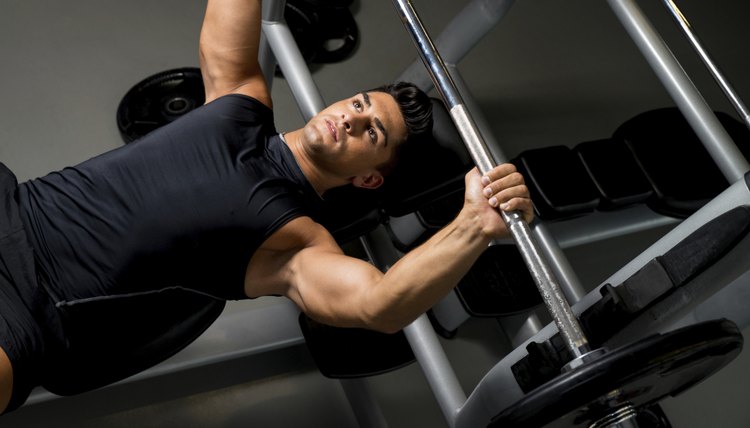What does fact checked mean?
At SportsRec, we strive to deliver objective content that is accurate and up-to-date. Our team periodically reviews articles in order to ensure content quality. The sources cited below consist of evidence from peer-reviewed journals, prominent medical organizations, academic associations, and government data.
The information contained on this site is for informational purposes only, and should not be used as a substitute for the advice of a professional health care provider. Please check with the appropriate physician regarding health questions and concerns. Although we strive to deliver accurate and up-to-date information, no guarantee to that effect is made.
What Are the Requirements to Become a Powerlifter?

Powerlifting is a competitive sport that features “raw” weightlifting where competitors strive to reach their maximum capability in three specific exercises. The main exercises are the deadlift, the squat and the bench press. Powerlifting events divide competitors into weight classes, which are based on the body weight of the competitors, not the weight to be lifted. Points are awarded for each repetition performed at the lifter’s chosen weight. While there are few strict requirements to becoming a powerlifter, preparatory training helps lifters become competitive more quickly.
Find the Power
Most powerlifting competitions operate under guidelines administered by a regional, national or international sanctioning body. The International Powerlifting Federation (IPF) is recognized as one of the predominant sanctioning organizations for the sport. Events sanctioned by the IPF require competitors to be at least 14 years old. Some events are invitation-only and you can only participate if you are a member of a gym or club affiliated with competition organizers. Some larger regional, national or international events will require you to compete in an Open event or to be a registered member of an invited team.
Start the Cycle
The first unofficial requirement to becoming a powerlifter is to begin training like one. If you have little experience with weight training at all, begin a novice lifting program that focuses on building upper- and lower-body strength through bench presses, deadlifts, squats and other compound lifts. Once you have some familiarity with basic lifting, you will need to begin a periodization cycle. Periodization consists of training in multi-week cycles that vary the intensity of training on a weekly or session-by-session basis. For example, many powerlifters train in nine-, 10-, or 12-week cycles, with three or four sessions per week. At the end of the cycle, you rest from any lifting for two weeks, then either compete at a powerlifting event or begin a new training cycle.
Weight It Out
Powerlifting competitions are typically divided into weight class categories that group competitors by body weight. For men, the lowest class is 114 pounds, with the top class set at 319 pounds plus. For women, the lowest weight class is 97 pounds, while the highest is 198 pounds plus. A competitor must officially weigh in at a scheduled time prior to competing, and this can be anywhere from two days to immediately prior to the event. The weight for each class is the maximum allowable weight for competitors. For example, if a male competitor weighs in at 197 pounds, he will compete in the 198 class. If he weighs in at 199, he will compete in the next-highest class, which is 220. The wider the gap between your weight and the amount of weight you lift earns you more points and is generally favored by the judging committee. Wider gaps are also used as tie-breakers.
Competitive Spirit
While points are awarded for each competitor based on how much they lift compared to how little they weigh, powerlifting is a uniquely individual sport that involves competing with one’s self as much as with other lifters. Many lifters, especially at the amateur level, set one-rep max goals for themselves to achieve at the event, independent of what other competitors are planning to lift. In fact, it’s nearly impossible to lift more than you planned to in order to overtake another competitor in points. If you meet your own goals for each lift at an event with precise execution, you will have gotten the most out of the event no matter where you place in the final rankings.
References
- Practical Programming for Strength Training; Mark Rippetoe and Lon Kilgore
- Getting Stronger: Weight Training for Men and Women; Bill Pearl
- ExRx.net: Barbell Bench Press
- ExRx.net: Barbell Deadlift
- ExRx.net: Barbell Full Squat
Writer Bio
Bobby R. Goldsmith is a writer and editor with over 12 years of experience in journalism, marketing and academics. His work has been published by the Santa Fe Writers Project, "DASH Literary Journal," the "Inland Valley Daily Bulletin" and WiseGEEK.
